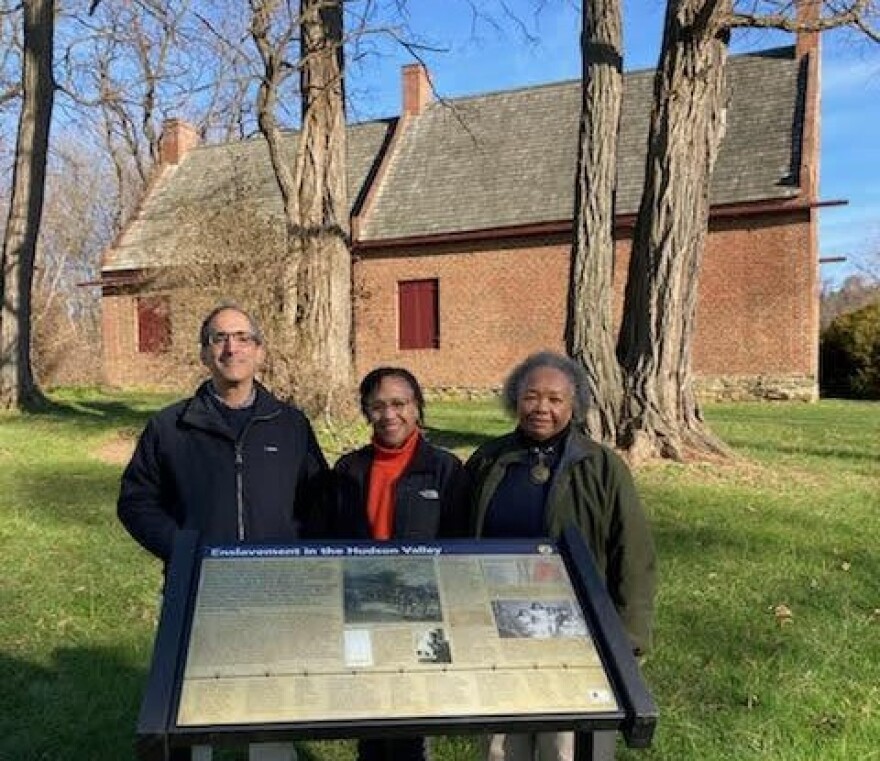My knowledge of the history of African-Americans in Columbia County was limited to one person when I was a child – singer and civil rights activist Harry Belafonte. He was also the only celebrity I’d heard of with a home in the county when I visited my grandparents here in the 1960’s. Belafonte owned a 160-acre estate in Chatham, NY. It was called Day-O Farm after the lyrics to a traditional Jamaican folk song he made famous in the 1950’s. Mr. Belafonte sold the farm in the 1990’s.
Vicki Jimpson-Fludd remembers: “My aunt who lived in Chatham would tell us a story how she literally ran into him with her shopping cart.” Her aunt was literally speechless. “She couldn’t say anything,” her niece reported.
Vicki and her daughter Leigh Fludd-Smith are leading an ambitious effort to expand the public’s knowledge, and that includes people like me, about the history of African-Americans in Columbia County beyond Harry Belafonte. Last year, in association with the Columbia County Historical Society, they created the non-profit African-American Archive of Columbia County.
Its mission is to document, preserve and share the largely overlooked history of Black people in the Upper Hudson Valley. This year the Archive and the Historical Society have sponsored a series of well-attended free lectures on different aspects of the African-American experience. The third one – “Occupations and Lifestyles of Enslaved and Free Peoples in the Hudson Valley” – will be held next Sunday, April 30th at the Hudson, NY Library and via Zoom. The speaker is Dr. Myra Armstead, an author and history professor at Bard College.
For Vicki Jimpson-Fludd, a management consultant and the president of the board of directors of the Yonkers Philharmonic Orchestra, and Leigh, a furniture restorer, the history of enslaved people in Columbia County is personal. They can trace their family’s presence here back to the mid-1700’s. When they recently visited the quarter-acre Persons of Color Cemetery in Kinderhook they recognized several of the names on the tombstones as family members.
“We are related to five of the people whose headstones are there,” Leigh told me during a Zoom conversation last week. Both women live in Croton, NY.
There are fifteen tombstones in the small cemetery, listed on the National Register of Historic Places. The remains of as many as five hundred people are buried at the cemetery and the Fludds believe they’re related to many of them.
According to their research, in the 1800’s Columbia County had the largest African-American population in New York State north of New York City. An estimated ten percent were people of color; most of it concentrated in the Kinderhook area. Both sets of Vicki’s grandparents lived locally.
Vicki grew up in Albany but remembers driving down with her parents to visit her family two Sundays every month. The story goes that one set of grandparents met at the Kinderhook Strawberry Festival around 1912 when her grandfather rode in on a white horse. “My family was very conservative,” Vicki said. “I was allowed to sit in their parlor but not do anything else. Sit there and not interrupt.”
Based on their research and that of the experts they’ve enlisted to lecture as part of their “In Perspective” series, the experience of enslaved peoples in the South and in Columbia County was both very different and in some fundamental ways similar. The Hudson Valley obviously didn’t have the South’s plantation system. And while it had some large landowners, many families who had enslaved people, owned a handful or less. It was sobering to learn from the 1820 census that was shared with me that eight people lived in the house we now own, one of them an enslaved person.
“They were hard scrabble farmers trying to eke out an existence with other hard scrabble farmers who happened to own them,” Vicki noted.
But that doesn’t mean their living conditions were necessarily easier than those of their Southern counterparts. Vicki and Leigh’s research has found advertisements in local newspapers placed by owners trying to track down runaway slaves. “I can’t say they were treated better,” Leigh said. “They were treated differently. They were still owned. They had very little freedom.”
And to identify runaways the ads included physical descriptions, including scars, “from being whipped,” Leigh said.
Once they were emancipated they often remained in the Hudson Valley, established free lives and owned property, unlike many Southern Blacks that migrated north during the Jim Crow era.
Yet as harrowing as the past often was for their ancestors Vicki and Leigh have found the detective work to identify them, their former owners and the times they lived, fascinating. “It’s sleuthing,” Leigh told me. “I pick up a detail for a runaway slave. Or somebody’s will. Or they’re mentioned in a deed. All these tidbits of information.”
She added, “Our goal is to collect as much information and as many artifacts as possible and hopefully to one day have a physical location to serve as a research center.”
Their work thus far has deepened their sense of connection to the community. “I walk down Broad Street or Hudson Street,” Leigh said of Kinderhook. “I have a feeling like my ancestors walked here. It’s very grounding. My people were here even before the country was a country. We helped build it. It’s mine.”
For more information and tickets for next week’s lecture and the fourth and final talk in the series on May 27th, visit the events page at the Columbia County Historical Society website -- cchsny.org.
Ralph Gardner, Jr. is a journalist who divides his time between New York City and Columbia County. More of his work can be found be found on Substack.
The views expressed by commentators are solely those of the authors. They do not necessarily reflect the views of this station or its management.





